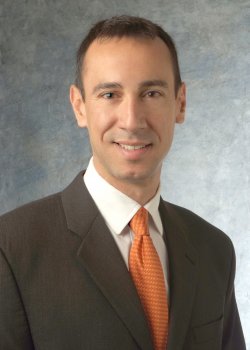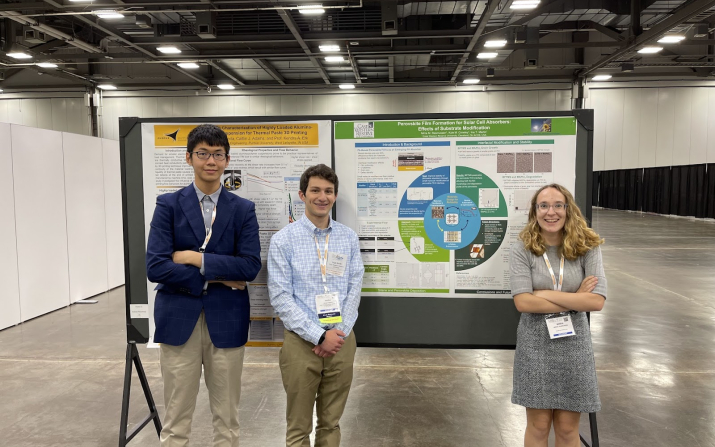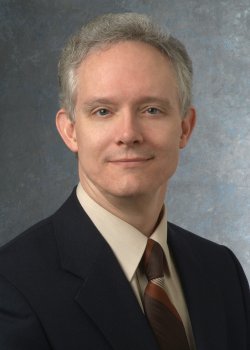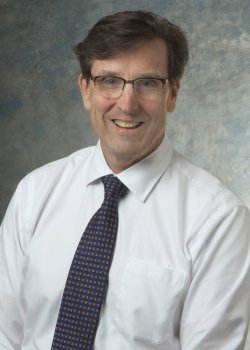
Students win awards at MS&T

The annual Materials Science & Technology conference was a successful one for many of the students in the Department of Materials Science and Engineering at Case Western Reserve University. Senior Mingwei Xu won second place in the undergraduate student speaking contest, while junior Mirra Rasmussen and senior Hugh Smith finished second and third respectively in the undergraduate student poster contest. Both contests were organized and sponsored by Materials Advantage.
Mingwei Xu, Hugh Smith and Mirra Rasmussen
After attending virtual conferences for over a year due to the COVID-19 pandemic, students were happy to travel to Columbus for MS&T, hosted by the American Ceramic Society, Association of Iron and Steel Technology and The Metals, Minerals & Metals Society. “The networking opportunities I had could not have happened in a remote setting, and I would not have been able to make so many new friends in the materials world,” said Smith.
"Being able to ask questions in real time as well as to network at events is critical,” added PhD candidate Kimberly Gliebe. “It is also a completely different experience to give a talk in front of an audience versus recording it.”
Rasmussen’s MS&T award was her third recent poster award, having won Best Poster Award in her section of the Photovoltaic Specialists Conference and a Microscopy Society of America Student Poster Award at Microscopy & MicroAnalysis over the summer. However, both these conferences were virtual, and “Going to an in-person conference was so much more immersive and it was much easier to actually talk to the presenters, students, and industry professionals than in any virtual setting,” said Rasmussen, who received $150 as a prize. “I met presenters from all over the country. (At the online conferences) it was more difficult to connect with my audience and I didn't get as much traffic as I did at the in-person conference.”
For her poster, “Perovskite Film Formation for Solar Cell Absorbers: Effects of Substrate Modification,” Rasmussen conducted research with Ina Martin at CWRU’s MORE Center focusing on thin film perovskite solar cells. Since perovskites for thin film solar cells wasn’t a topic focused on much at the conference, Rasmussen enjoyed sharing her research with graduate students and industry professionals at the conference. Some of the main focuses of her poster featured using spectroscopic ellipsometry and contact angle for characterization and silanization for the organofunctional silanes and spin coating for the perovskite layer.
Smith’s poster, “Machine Learning Approaches to Predict Properties from Microstructure Images in Ceramic-Metal Composites,” focused on using different data science techniques to quantitatively examine microsture images of battery anode samples. Working with Associate Professor Alp Sehirlioglu, Research Associate Professor Laura Bruckman and William Huddleston, who graduated from CWRU in May with a PhD in materials science and engineering, he also focused on developing structure-property relationships. “I had a constant stream of people talking to me at my poster for over an hour,” he said. “People seemed to find my project interesting and had a lot of great questions about it.” In addition to the $100 he received for his prize for his poster, he was awarded the Lewis C. Hoffman Scholarship Award from the American Ceramic Society’s Electronics Division, a scholarship worth $2000.
Back at CWRU, Xu, a double major in materials science and engineering and mechanical engineering, won the department’s student speaking contest before being selected by a judging panel to speak at MS&T. He received $250 for his presentation, “Post-Additive Manufacturing Densification, Dimensional Stability, and Defects of a Commercial Stereolithography Ceramic Resin.”
Professor John Lewandowski’s research group was well-represented at MS&T. From left are PhD candidate Hannah Sims, PhD student Austin Ngo, M.S. candidate Collin Sharpe, PhD candidates David Scannapieco and Yang Liu, and M.S. candidate Kaiser Aguirre.
At his first technical conference, PhD student Austin Ngo gave two presentations: "Effects of Process Parameters, Post-Processing, and Defects on Tension and Fatigue Properties of LPBF AlSi10Mg" and "Effects of Process Parameters on Fatigue Behavior and Defect Characteristics in LPBF Ti-6Al-4V." He was happy that multiple people from industry and academia reached out to him after his presentations, including several who expressed interest in future collaborations.
To prepare for Ngo’s presentations, he, PhD candidate David Scannapieco and M.S. candidate Collin Sharpe conducted “hundreds of tests and hundreds of hours of analyses.” They performed mechanical and fatigue testing in AMMRC and post-test specimen fracture analyses scanning electron microscopes in SCSAM and the MORE Center. Their research proved that mechanical work in the AMMRC can establish strong relationships between variables in additive manufacturing processes and material performance, and we have learned how to identify and quantify these relationships.
Scannapieco gave two presentations of his own, one focusing on patent pending In-situ alloying of GRCop-42 and another on fracture surface defect quantification of additively manufactured Ti-6Al-4V. He processed his materials via powder metallurgy and additive manufacturing before running various mechanical tests and using wet chemistry and metallographic work with a scanning electron microscope. “This is a clear cross section of materials science where we work to understand processing impacts on microstructure and properties,” he said. “In some cases, like the GRCop-42 work, we are leveraging known advantages in the processing to create ideal microstructures faster and cheaper than ever.”
Scannapieco was particularly interested in learning to analyze specific aspects of microstructure. The critical portion of the alloy's microstructure is only about 5% of the total material and the metal needs to be dissolved in acid to isolate parts of the microstructure. “It was such a unique piece of the work to find a reaction that wouldn't impact the important part but could completely remove the uninteresting part,” he said. After his presentations, he had several individuals approach him with questions about doing similar work of their own.
PhD candidate Yang Liu also gave two presentations, “Effects of Laser Remediation Treatments on Environmentally-Assisted Cracking of 5xxx Aluminum Ship Plates” and “Effects of Laser Remediation Treatments on Global vs Local Environmentally-Assisted Cracking of 5xxx Series Aluminum Alloy Ship Plate,” both of which focused on laser remediation on 5xxx Al-Mg ship plates. For his former presentation, he collaborated with Benjamin Palmer, who graduated from CWRU with his PhD in Materials Science and Engineering in 2020 and is now a materials engineer at Pratt & Whitney.
Liu’s research for his presentations focused on fracture toughness testing in seawater environments on his specimens. He analyzed the effect of laser surface remediation on those specimens. “It's interesting when you analyze your data and find promising results which can be correlated with each other,” he said.
After publishing a paper on her data science research, Gliebe turned her research into a “lightning talk,” a talk that was five minutes or less with no questions allowed. Her talk, "Using Unsupervised Learning to Understand Thin Film Growth," focused on intensity oscillations of different diffraction spots within reflection high energy electron diffraction and the phase shifts they have to each other.
PhD candidate Hannah Sims conducted multiple mechanical tests, including charpy impact, toughness, and fatigue crack growth), differential scanning calorimetry runs, and microstructural analysis to prepare for her oral presentation, "Effects of Process Parameters on Fracture and Fatigue of High Deposition Rate Laser Hot Wire Processed CP-Ti Grade 2." Sims said her presentation helped her learn about the advancements in the additive manufacturing field during COVID-19, and many attendees were interested in her correlation between oxygen analysis and the beta transus temperature found by differential scanning calorimetry. This research has shown that our mechanical work in the AMMRC establishes strong relationships between variables in additive manufacturing processes and material performance, and we have learned how to identify and quantify these relationships.
In addition to presentations from CWRU students, attendees enjoyed hearing about research from members of the materials community at large. Smith described a presentation by Taylor Sparks of University of Utah on using machine learning to predict new crystalline materials as “engaging and dynamic.” Scannapieco enjoyed hearing about a collaboration between Eaton Corporation and University of Michigan, where ultrasonic fatigue testing was done at 20,000Hz (as opposed to the 20 Hz testing done at CWRU), as well as a presentation from a group from Ohio State University about mechanical testing of lattice structures, allowing building of components that are not 100% dense.
The conference was a valuable experience even for students who did not give a presentation. M.S. candidate Kaiser Aguirre, who described the conference as “fantastic,” was intrigued by the extant need for robust, fundamental research on High-Entropy Alloys. Senior Jackson Smith, who is starting her BS/MS studies, was inspired by presentations related to single crystal manufacturing and modeling. “It was cool to hear more advanced things related to my research,” she said.
MS&T attendees came from across the United States and from a few other countries, including Mexico and the United Arab Emirates.
"The environment at an in-person conference was way more engaging than at a virtual conference,” said senior Bridget Powers Beggs. “Small conversations with people at mixers or while waiting for a presentation to start often had interesting insights. Plus, hearing people talk about their research in-person felt much more tangible than a recorded presentation. I am very thankful to the donors who have given to the Undergraduate Materials Society over the years and made the trip possible.”
Associate Professor Mark De Guire and Professor James McGuffin-Cawley with the undergraduate students from the department of materials science and engineering at CWRU who attended MS&T. From left: De Guire, seniors Sipei Li, Mingwei Xu and Jen Bradley, junior Mirra Rasmussen, seniors Jackson Smith and Joel Frostad, seniors Hugh Smith and Bridget Powers Beggs, junior Elton Fernando, sophomore Ian Suddarth and McGuffin-Cawley.




